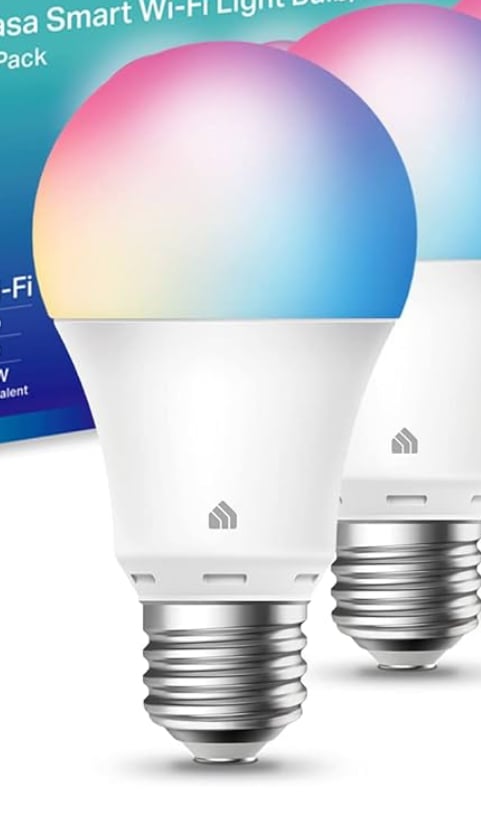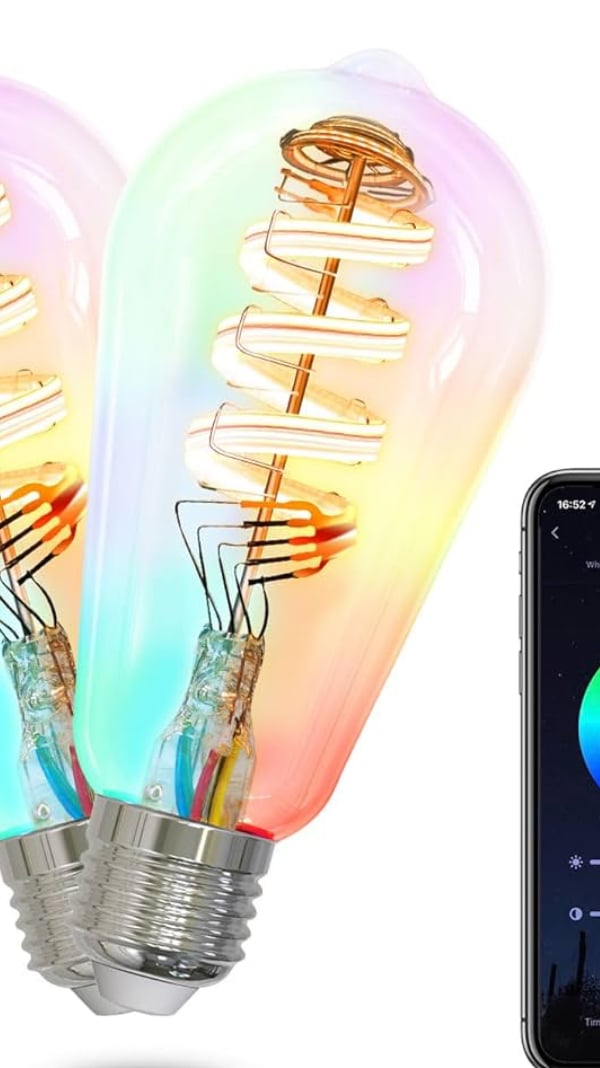How come LED Light Bulbs only last for about 2-3 Years?
I’ve bought and replaced a lot of light bulbs, and I noticed that all of them said “up to 20,000 hours” which would be about 5 years given 12 hours of daily use (which we definitely don’t).
I have a dozen that run 12+ hours a day. I’ve had 1 fail in 5 years.
Don’t buy cheap LEDs, and don’t put them in enclosures that trap heat.
Speaking from experience: LED drivers hate dirty power. If they burn out frequently, check the wiring for damage. I probably avoided a house fire.
Dirty power? Aww geez it’s been a few years since I last washed and waxed my power lines. Guess I gotta open up the walls again.
That’s a good point. LEDs dislike unstable power a LOT more than incandescent or fluorescent.
As an EE graduate I want to hear more about what dirt means and what driver can be affected by it. I’d expect power electronics to stand 100% over voltage over short periods and easy 20% long term, which would blow up lots of other things on the house before the driver or the LED starts performing worse.
Yep. When I moved into my house the previous owner had used all garbage Walmart LED’s. I think I had one fail each month and just bought a bunch on sale from Phillips eventually.
Most common failure was the driver. So they turned into strobe lights lol. Most annoying failure ever.
And more importantly, not every LED is dimmer compatible. Sometimes they’re super picky or just plain don’t work.
Can you recommend which ones to buy? I have the strobe light problem and it is indeed very annoying
Generally I don’t buy anything else other than Phillips. They’re usually bulletproof if you don’t get the smart bulbs. I’ve not had a Phillips fail in ~10 years. But that’s a sample size of like 30 or so bulbs.
While I’ve had a Philips fail, it was due to environmental reasons. Otherwise, Philips bulbs have lasted me literal years for hours every day.
I also run General Electric bulbs, and they’ve also lasted years.
The strobe light problem might also be caused by putting a LED that’s not dimmer-compatible on a dimmer switch
I have Cree, Amazon and IKEA. Those all seem to last about the same.
Oh dang, a cheap driver is probably $0.50 cheaper than a half decent one that can take the hit.
In Australia anything has 12 months warranty by law, this factory would bankrupt quick.
Generally because you’re buying cheaper ones that aren’t built as well. Heat destroys LEDs and the cheap bulbs generally use fewer individual LEDs running at higher power to produce a given output in lumens. More expensive bulbs use more LEDs at lower power to achieve the same light output so that they’re not constantly being overdriven and last much longer.
What would you recommend?
I have dozens of Philips Hue bulbs 6-10 years old and I honestly don’t think one of them has died. I’m sure they have lost some luminance over time, but they still get the job done no problem. I rarely run them at 100% anyway.
But yeah I have also had some cheaper LED bulbs die within a few years.
Just fyi for anyone who would care about this: while hue bulbs are built well they are moving towards a model that requires you to put them on “the cloud”, even though they were sold for years and years without that requirement. The update will be mandatory whether you want it or not as part of Philips security being integrated into the app. It’s unclear what will happen if you don’t create an account and sign in at that point
So if you’re like me and put all your iot shit on an isolated vlan without internet access they may not be the best option for you. Or if you just don’t want to support a company that wildly changes the tos years after purchasing their (expensive) product. I don’t want my home shit on the internet, I don’t trust Philips to put enough cash or effort into securing their servers, etc.
The bulbs do work with zigbee though and that seems to be a viable alternative to using their hub/app although I haven’t tested it fully. This also means if you’re using them via HomeKit you’ll need some kind of bridge like home assistant
I added all my 10 year+ Hue bulbs to a zigbee stick about 4 years ago. I control them with Home assistant and Zigbee2mqtt. They were a bit flakey at first but after awhile now with updates they have been flawless. Best thing is you still get firmware updates through z2m. Highly recommend using Hue bulbs for their long term support and quality. I have had 1 bulb start flickering and Hue actually replaced it, free of charge.
That’s good to hear. I have a zigbee stick but haven’t found the time to repair them that way yet. I definitely agree they’re good products, it just left a real bad taste in my mouth when after years of using them I got a notification in the app that soon I’ll be required to put them online, which is nonsense
I’ve been using Philips Hue bulbs with Zigbee in Home Assistant for years without issue.
Can confirm
I bought three of the gen 1 Philips Hue when they first came out and all three died within two years. I hope they’re better now, but I’ll never buy Philips Hue again.
And in case you ask, they weren’t enclosed, they were in IKEA floor lamps. They were at 100% all the time, but I feel like if they can’t survive that, they shouldn’t be able to do it.
I had one flicker after 8 years and the company replaced it for free. The rest of my 10 year old bulbs are still working fine. I wish they would die though to give me an excuse to replace them with the better color versions. Many of mine are still the old ones with green that can only go to 🍋🟩 lime.
deleted by creator
Phillips warm glow are my favorites after watching technology connections. They last, and they look just like incandescent bulbs as you dim them.
deleted by creator
I just buy a cheap jumbo pack from Amazon. They’re like 15 bucks and last for years which is good enough for me.
Lighting a campfire
Heat.
While the actual LEDs (*) may be rated up to 20,000 hours+ in optimum circumstances, but the actual 3rd party bulb manufacturers, especially the cheapo brands, are building bulbs with poor heat dissipation designs and cheap and/or poorly designed circuits. Same goes for other parts they may use, such as the power supply. To reach 20,000+ hours, you need everything - not just the LED - to be working optimally together.
(*) the best LED makers out there right now, e.g. Nichia, Cree, Phillips - really do some amazing engineering.
I was going to being up Nichia and Cree! (I’m a flashlight junkie, can’t help it.) There’s a world of difference in quality LEDs vs. cheap units.
I have 3x CREE floodlight-style bulbs on my terrarium, never lost one. The CRI (color rendering index) is 90+ (94?) and the colors are natural. If you contrast those with a regular LED, the results are gross.
The same reason that western countries refused to buy the extremely hard to break Superfest glasses manufactured in the GDR (East Germany) during the Cold War: planned obsolescence and consumable goods mentality in the interest of profit (they got a west German salesman to take the glasses to a trade show, and nobody gave a shit, because part of the industry’s profit model at the time was the sale of new glass due to breakage.
In point of fact: better, longer lasting LED bulbs DO exist, but they’re only sold in Dubai (due to the monarchy there basically decreeing that they wanted that to happen, so Phillips made them for them, but will NOT sell them outside of the country, because it would kill their sales elsewhere).
They’ve been sabotaged by design. LEDs should last 10+ years if built even half away reasonably, but unfortunately the manufacturers basically got together and agreed to build them in such a way they would fail. Same as regular light bulbs, they just have to work harder.
I still have some of the earliest modern LED bulbs on the market–old Philips ones, the AmbientLED (i think) with the yellow casing and large heat sinks. They’ve been running for like 15 years now and not a one of them has failed. I spent several hundred USD replacing all my bulbs with those back in the day and they’ve done me well.
Modern bulbs are trash by comparison. Not because the technology is limited in some way but because they refuse to make anything to that quality anymore.
We need an alternate solution to this planned obsolescence bullshit. Light bulbs hit 50k rated hours long ago and they were talking about making ones that went 100k+ but these days you can’t find anything above 25k. And that’s setting aside the fact that a lot of these rely on apps that could be dropped at a moment’s notice.
Wait til people hear that GE, Phillips, and others literally created a cartel to sabotage light bulb lifespan. https://en.wikipedia.org/wiki/Phoebus_cartel
One of the originators of the idea of “planned obsolescence”. Even after the cartel got killed the manufacturers never extended the life of the lights into (to an extent) CFLs and then moreso the days of LEDs.
I still have some of the earliest modern LED bulbs on the market–old Philips ones, the AmbientLED (i think) with the yellow casing and large heat sinks.
I bought a couple of those for an enclosed fixture inside a skylight. The ceiling height there is 20 feet, plus another 2ft into the skylight tunnel. I bought those LED bulbs (at $40/each) because I never wanted to change them. Both bulbs were still fully functional 15 years later. I have since sold that house, but I bet they’re still functioning.
Since people are just giving snarky douchebag replies, I’ll actually attempt to answer the question since that’s what this community is for?
The estimate given on the packages of these bulbs are absolute best case scenario, using an optimal temperature range and pattern of use that won’t really match up with the average household because:
-
You may go on vacation and let your house get cold or hot. This could affect the life of thr bulb
-
The manufacturer is likely leaving the bulbs on 24/7 when measuring. Most people turn lights on and off multiple times throughout the day. This can decrease the life of thr bulb, just like with any other electronic device.
-
Humidity in the house can change dramatically year round. Manufacturing tests probably keep a constant humidity level.
-
If you’re buying cheap random LED bulbs off Amazon from dogshit brands (i do thid too so not knocking you), the manufacturer estimates might just straight up be a lie.
I’m sure there are other reasons but that’s a good start.
LEDs can take quite a beating. The only thing that degrades then is being on, and being hot. For all purposes unless it’s inside a restaurant kitchen or they’re on, they’re not hot.
Other packaged electronic components follow the same rules. Except wires and solder that can oxidize without being used.
So no, I think that’s a grift if you can’t reach 5 years. When domestic LED lighting was in infancy we’d hear all power LEDs, like for cars, should last 10 years.
It wouldn’t degrade from being shut off and on a bunch of times? I know like HDDs can degrade faster if they’re constantly powered off and on.
Appreciate the feedback. I just tried to answer the question the best I could since at the time most of the replies were unhelpful and rude
Mechanical things suffer a lot of stress from turning on/off. But even spinning disk storage turns off automatically if desktop is idle for a certain time, it’s a balance between switch vs continuous operation, they have overlapping kinds of wear and tear.
Top of mind, you can expect 10k cycles from typical buttons and it’s hard to be less complex than a button. Because metal parts are subject to fatigue.
Flash based drives would certainly fail faster or slower depending on the number of write bytes over its life.
Then there’s erosion caused by electrons, which is my biggest suspect for the problems of last generation of Intel CPUs. You have to royally screw up to start selling something that overlooked this.
Yea I don’t think I’ll buy Intel again. My next CPU upgrade will likely be an AMD ryzen chip.
Wait until you hear AMD is treating OEMs now as bad as Intel did on their most glorious moments.
I’ll try to buy as few computers as I can until Risc-v is main stream.
-
I replaced my mom’s can lights with LEDs and I was an early adopter. I believe it was ~2012-15 ish. Not a single one has died. The only reason any of them fail now is poor quality and / or planned obsolescence. The tech itself is solid AF. I had some bulbs I got from IKEA for $1. Those have failed countless times.
Get the ones with the strip LEDs that look like they’re trying to emulate a glowing tungsten filament. I can’t remember where I got the information; it was like the Technology Connections YouTube channel or something, but I remember them saying that since they put the LED lights in series on those bulbs, they have a much higher voltage requirement to drive them, and much less circuitry is needed. It’s the circuitry that burns out, and many of these filament-style LED lights literally only have a resistor as their main component.
I’ve swapped to these kinds of LEDs like…5 years ago, and haven’t had one burn out yet. Probably have like…15 of them across the entire house.
https://youtu.be/fsIFxyOLJXM?si=4wz0wa355Wd9gkUP&t=1389 – YEP – Found the advice. Starts at 23:09 BigCliveDotCom also says the same in his episode about Dubai Lamps: https://www.youtube.com/watch?v=klaJqofCsu4
Almost every bulb in my house is the filament style and it’s always surprising when one dies. The 4 in my porch lights are on 24/7, in all weather of course, and have been for 4 years.
It’s the circuitry that burns out, and many of these filament-style LED lights literally only have a resistor as their main component.
Not true. I’ve been dumpster-diving for LED bulbs for 5 years and in the majority of cases, it’s one LED in a series chain that burns out (fails open circuit). As for the circuitry, the most common failure point is the inductor between the capacitors smoothing out the rectified mains voltage.
Mains filament bulbs with nothing but a resistor exist but they flicker between 0 and 100% at 100 or 120 Hz, which is not very pleasant. Good filament ones have circuitry very similar to the plastic ones. The reason filament bulbs last longer is better heat dissipation from the LEDs, and the circuitry does not get too hot either.
Smart bulbs like this:

Have PCBs with small LEDs surface mounted to them. This means that the on-off cycle of the bulb causes heat deformation cycles of the PCB. This stresses the foils in the PCB and can eventually cause them to lose connection. That’s one of the reasons why they’ll often start flickering or lose the ability to be cool white, warm white, or specific colors (the different kinds of LEDs in them).
But bulbs like this (often called smart edison bulbs):

Use longer/larger LEDs that aren’t mounted to the PCBs, and will probably last much longer. They are better at not overheating their own electronics.
If you want the first kind to last longer, don’t run them above ~60% brightness.
Are you sure? Doesn’t the “smart edison bulb” design make it harder to dissipate heat to the casing, therefore making the LEDs get hotter compared to PCBs with LEDs surface mounted on them?
Anyway, if you want your
light bulbsany technology to last long, don’t buy the “smart” variant. “Smart” usually means more components and/or more dependencies on interfaces, and more complexity, so a higher chance to fail.Technology Connections seems to think they’re better and last longer, and I trust him implicitly.
i have 7 bulbs since 2019
none of them failed so far.all the lifespans i found ranged between 15.000 to 25.000 hours ( which btw was equated to 1.000 hours per year instead of 5.000 per year)
so this doesn’t sound normal to me.
how manny(in use) bulbs do you have?
what brands do you use?Typically it’s not the emitters – the LED’s themselves – that fail. If driven correctly, those have lifetimes of tens of thousands of hours. That’s what the manufacturer is advertising on the box. Yes, an individual LED when driven correctly will probably last 20,000 hours. (Usually more, depending on how pedantic you want to get. The 20,000 hour figure often quoted is the point where the emitter drops to 80% of its original light output.)
LED “bulbs,” the type that replace filament bulbs in consumer fixtures, typically fail in their driver hardware. LED’s run off of low voltage DC and in the base of all of those LED conversion bulbs is a power conversion assembly that steps down and rectifies 120v/240c AC to whatever DC voltage the LED array in there expects. These are inevitably made out of whatever the cheapest passives and semiconductor components the manufacturer thinks they can get away with. These don’t last 20,000 hours, especially not in where they’re usually installed.
The main killer for all semiconductor electronics, which includes both LED’s themselves and their driver circuitry, is heat. This is often exacerbated by the fact that LED replacement modules are usually stuck in enclosed light fixtures designed for filament bulbs that have insufficient ventilation to get rid of the waste heat from the components in an LED module. The insides of those enclosed ceiling light fixtures, the ubiquitous “boob light,” gets hot, even with only LED modules installed. Filament bulbs don’t care because they don’t have any electronics in them and how they work is literally by getting so hot the glow. But LED modules in that kind of environment will invariably suffer an early failure.
The best way you can get your LED modules to last longer is to install them in a fixture where they’ll have a lot of air circulation available or at the very least which is not fully enclosed.
Excellent.
Also, the D stands for diode, which is a one-way passage for electricity, some rectifiers may use diodes in their circuitry. So another way to cut costs is to not rectify completely or well.
Case in point, cheap LED Christmas lights are often not rectified at all so they flicker at 50/60 Hz depending on your country’s electrical supply…
I freaking hate that flicker so much. I can always tell when someone has done a cheap aftermarket headlight conversion because I’ll see the flicker out of the corner of my eye and my rearview mirrors and it’s incredibly distracting.
Slightly different. The alternator on a car has a very variable frequency due to change in engine speed and it’s fed into the car’s regulator/rectifier, so the typical power supplied is stable. However, many cars will use the high beams at half-power to function as daytime running lights (DRLs). This is usually done by pulse width modulation (PWM) meaning it’s chopping up the power supplied at a nearly imperceptible speed. An incandescent bulb will have so much fade time that the choppy power will go unnoticed. From there, theses two possibilities that cause the bulb to flicker. Very cheap bulbs will show their choppy power supply directly by flickering, making them noticeable as the move across your vision. Some mid-range bulbs will have cheap smoothing circuits (since vehicle power is “dirty”) so there will be charge time and discharge time as the capacitors charge up and down, allowing and disallowing the emitter to light, creating a slower flash pattern. Higher end bulbs (ignoring the part where their beam pattern is still usually trash) should be able to accommodate the chopped power and run dimmer.
You may also notice a similar flicker on LED tail lights where the brake light is a brighter tail light instead of a dedicated element. Such cars will use PWM for dimming and may flicker as they move across your view as well. Some of my car’s dash uses LEDs for backlighting and dimming the dash is done via PWM. If I glance across the steering wheel from side to side, it looks like “cruise” gets stamped across the view
Hah, I have one three bulb boob light that’s my “trash” fixture because it gets whatever mismatched leftover I can find. At one point I had an LED, and incandescent and a CFL in it. It doesn’t have the extra ventilation that modern ones do so I’m sure it gets hot, but even that doesn’t seem to shorten the lives much
Mine work for I think over 10 years now. Some of the actual LEDs inside died but you don’t really notice 1-2 of 200 inside the bulb being dark.
I have been dumpster-diving for LED bulbs for 5 years. None of them had 200 chips, they usually have about 5-30 packages with 1-6 diodes each for a total of around 30-60 so that they total some 90-180 V in series (I live in a 230V mains region, and the 330V rectified mains can be efficiently transformed to that voltage by an SMPS). Because they are in series, if one in the series chain fails open circuit (the most common way), the entire chain goes out. Yes, fixtures (not bulbs) with 100+ LED chips exist and if they are designed to operate at a low voltage with all chips in parallel, the failure of one will not affect the others.
This sounds like an interesting hobby? Care to share more about how/why you are into dumpster diving for lightbulbs?
I saw Big Clive and DiodeGoneWild take some apart, and we had been using halogen or fluorescent ones at home because LED bulbs were over $10 back then. I thought I would learn something about electronics but not really, the failure modes are always the same: about 50% of the time, an LED burns out. 25% of the time, it’s the smoothing inductor gone open circuit. 10% of the time, a bad contact somewhere (usually solder joints on linearly-regulated ones). 5 % work out of the box for some reason. I remain adamant about not paying for LEDs even though dumpster diving is objectively not worth the trouble anymore.

Maybe stop buying the seizure-brand ones from Amazon?
I think I’ve had to replace one bulb in my entire house in the last 6 years or so.
They don’t? What are you talking about?
Cheap ones do.
I have never had that happen and I buy my bulbs from the grocery store
I’ve had brand new ones that were duds before.
US?
I have still to have a led light break. They just never do, I buy mine at aliexpress or IKEA or wherever.
Is Lemmy worse than Reddit to answer no stupid questions?
Yes Lemmy is just as dogshit, if not more than Reddit in terms of smug bullshit replies. I’ll be downvoted to oblivion by saying this so hopefully someone sees my comment before it goes to the bottom…
Edit: yep. Already downvoted lol. God forbid i criticize Lemmy. I guess ya’ll ain’t interested in making it a better place?
They never last that long, as they easily get away with it.
In one of the gulf states, though (Dubai?), they actually have only longer lasting LED lights for sale, as the minister responsible for regulation is something like an EE and forced the LED bulb providers to make a special version of those bulbs that basically last for ever. Those are only sold in that country, and hard to come by elsewhere.









